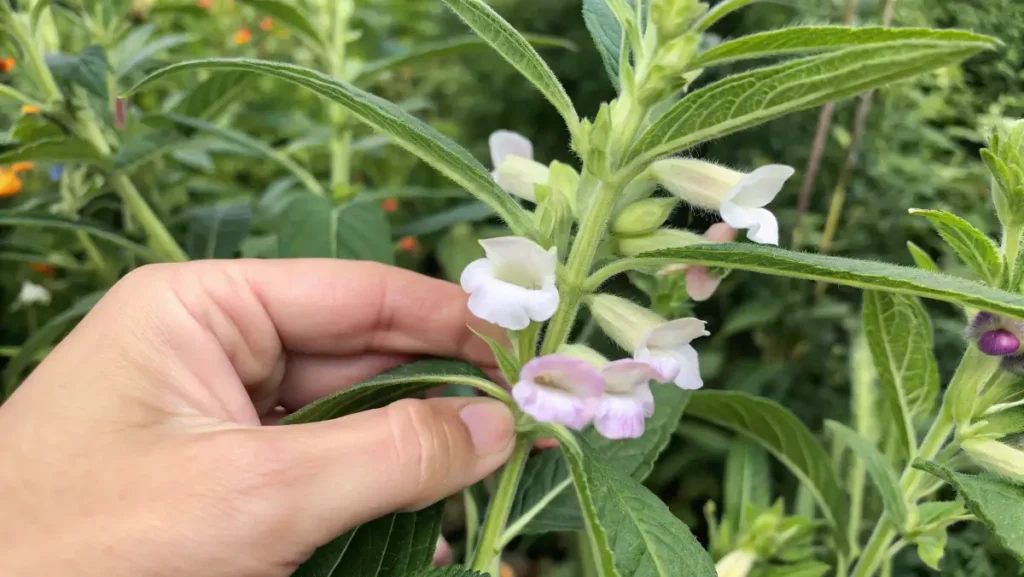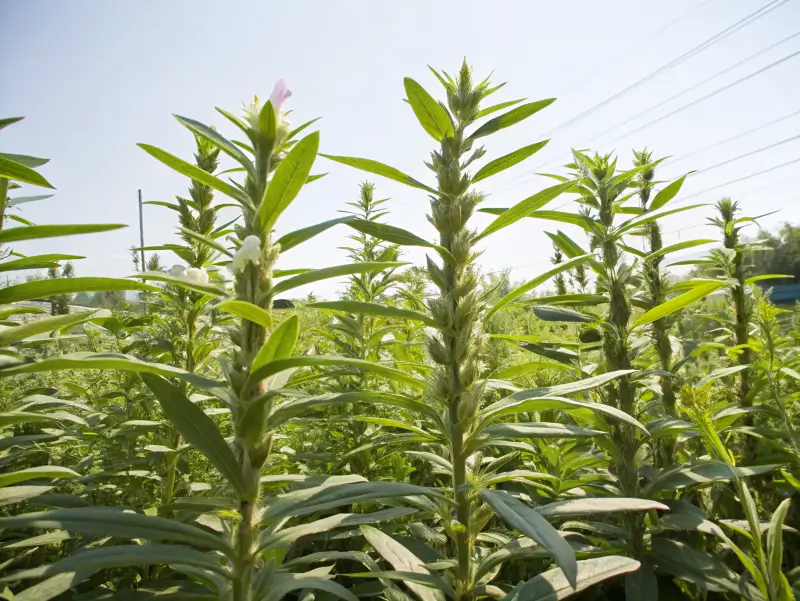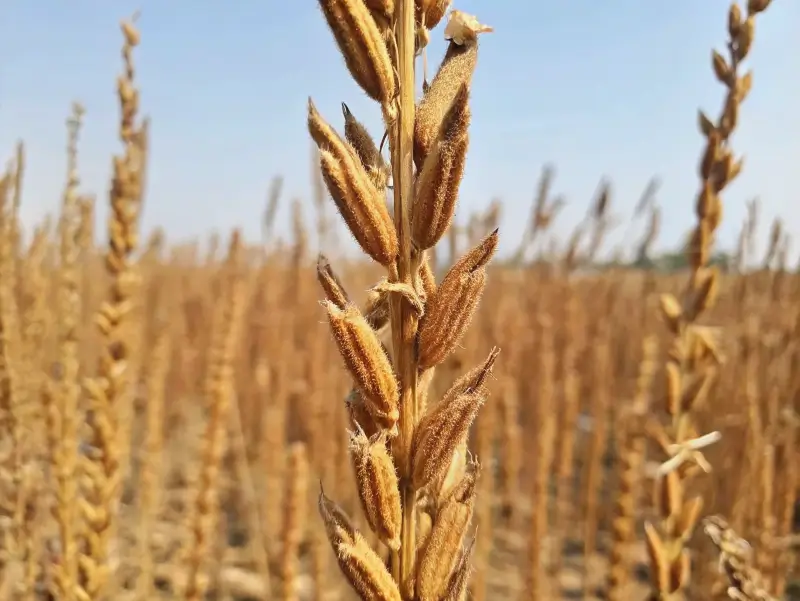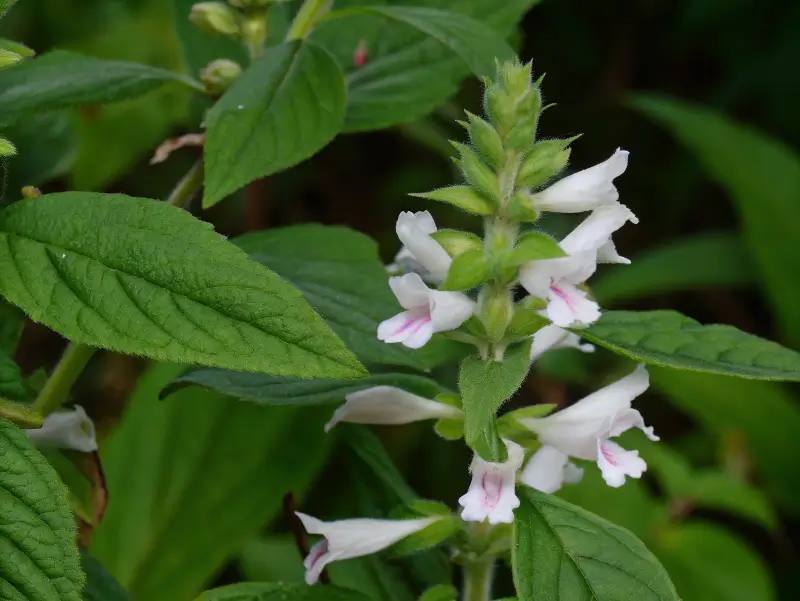
Sesame seeds keep popping up in dishes nationwide, causing Americans to wonder if these tiny powerhouses can thrive at home. This guide tackles the big question: Can sesame grow in the US and bring delightful flavor? From choosing the right climate to harvesting at the perfect time, discover everything you need for ensuring these crunchy seeds succeed in American soil.
Table of Contents
Introduction to Sesame Growing in the US
Overview of Sesame as a Global Crop
I remember my first taste of sesame in a buttery pastry. That warm, nutty flavor made me wonder if these tiny seeds were produced nearby or shipped halfway around the world. Over time, I realized that sesame has deep roots in ancient cuisine—temples and tombs in parts of Asia and Africa even depict images of sesame thousands of years old!
- Sesame seed planting has spread to many continents.
- Farmers value oil-rich sesame seeds for cooking oils and flavor boosts.
- Big demand worldwide spurs interest in constant research and trials.
Today, nutritional experts tout sesame’s protein and mineral profile, nudging more health fans like me to toss these seeds onto salads or into smoothies. Can sesame grow in the US? That question continues to captivate eager growers everywhere I look.
Importance of Sesame in the US Agriculture Landscape
Farming communities across the United States keep reinventing themselves to stay profitable. It’s no surprise that American sesame production is on the table, especially with the growing popularity of “clean eating.” Whenever I’m at the local market, I spot new tahini brands or specialty sesame mixes.
- Incorporating sustainable sesame agriculture draws attention to efficient water use.
- Sesame’s moderate irrigation needs can compare favorably with thirstier crops.
- U.S. farmers benefit from an expanding market for natural, plant-based products.
Because of these perks, the question Can sesame grow in the US? motivates farmers and hobbyists alike to consider weaving sesame into their fields or gardens. Honestly, seeing more local sesame products on shelves has inspired me to try it out myself.
Can sesame grow in the US? Exploring Viability
Climate Requirements for Growing Sesame
Yes, Can sesame grow in the US? absolutely. These plants are sunshine lovers. They prefer:
- Daytime temperatures between 75°F and 95°F.
- Frost-free conditions from planting to harvest.
- Well-draining, slightly acidic to neutral soils.
If you’re in a cooler state, you’ll need to time seeding to dodge spring frosts. Despite that challenge, drought-resistant oilseed traits allow the plant to handle dryness once established. However, a sudden cold front or long wet spell could seriously hamper seedlings, so watch the forecast.
Regions in the US Suited for Sesame Farming
Farmers often ask me whether Can sesame grow in the US? in places like the Pacific Northwest. Truthfully, the scorching hot areas make the best fit, though some pockets in the Midwest might succeed with consistent summer heat.
- Texas sesame farms regularly top the production charts.
- Oklahoma growers see success due to warm summers and sandy loam soils.
- Southeastern US sesame trials point to good yields with meticulous timing around rainfall.
In these zones, planting can start in late spring once nighttime temperatures stabilize. I’ve spotted more articles about Can sesame grow in the US? with backyard gardeners sharing their success in states I never expected. If they can do it, there’s hope for many other regions, provided the heat holds.
Historical Background of Sesame in the United States

Early Experiments with Sesame in America
Digging into agricultural history shows attempts at small-scale sesame cultivation in the United States dating back to the early 1900s. Southwestern farmers leveraged hot summers, while eastern growers tested different irrigation methods.
- Row spacing techniques emerged to handle weeds.
- Trial-and-error taught them to plant after any chance of frost.
- Local presses turned out cooking oil from these seeds, fueling small businesses.
Progress was slow but steady, proving that Can sesame grow in the US? was not only a fair question but one with real potential. Those first adopters set the stage for modern operations, reminding us that persistence often pays off.
Evolution of Sesame Production Methods
By the 1950s, new machinery and improved seed strains emerged, boosting yields and slashing labor. Sesame genetics and breeding advanced plants less prone to shattering—important since ripe pods can burst if jolted.
- Mechanized harvesters simplified the cutting process.
- Government-backed studies (see USDA for resources) offered vital input.
- Enhanced pest-control measures lowered insect losses.
This modernization encouraged more farmers to answer, “Can sesame grow in the US?” with renewed optimism. A few profitable harvests in specific regions showed there was money to be made if the crop was planted and handled correctly.
Best Practices for Growing Sesame in America
Seed Selection and Planting
Choosing robust seeds for your particular climate is step one. In cooler states, a variety bred for shorter seasons is helpful. Remember, if you’re curious—Can sesame grow in the US?—the answer hinges on planting timing.
- Plant seeds at a shallow depth (about 1/2 inch).
- Allow good row spacing for airflow and reduced disease.
- Aim for late spring once soil warms above 70°F.
I always recommend checking soil pH and nutrient levels. A balanced approach supports vigorous growth and reduces pest risks. I’ve heard more than a few success stories from folks who tested the soil first and got bountiful yields.
Irrigation and Nutrient Management
Although sesame tolerates stretches of drought, it appreciates well-timed watering during germination and flowering.
- Drip irrigation or a light sprinkler system usually works best.
- Compost or aged manure adds gradual nutrients without overwhelming roots.
- Overwatering can lead to fungal problems—keep an eye on drainage.
I discovered that a mild organic fertilizer in mid-season keeps leaves healthy. When answering people who ask, “Can sesame grow in the US?”, I emphasize that controlling soil moisture is vital. Doing so ensures seeds won’t rot before they even have a chance to sprout.
Harvesting and Post-Harvest Handling

Determining Maturity and Harvest Timing
Those who keep wondering, Can sesame grow in the US?, also ask about harvesting. Sesame shows readiness when:
- Pods shift from green to a brownish hue.
- Leaves drop away near the bottom.
- Seeds rattle around when gently shaken.
Dry spells near harvest help prevent mold. Where storms threaten, farmers sometimes cut stalks early to finish drying indoors. Mechanical combines can tackle large fields, while smaller growers clip by hand—a labor of love with serious bragging rights once the seeds are in a jar.
Drying, Cleaning, and Storage
Hand-harvested sesame frequently comes in tied stalk bundles:
- Hang or spread them out for uniform drying.
- Screen away leaves and debris once pods open.
- Store in airtight containers or heavy-duty bags at 50°F to 60°F.
Keeping humidity low (under 60%) preserves color and flavor. My personal stash sits in glass jars, letting me see the seeds whenever I reach for them. That little moment of pride—knowing I answered for myself “Can sesame grow in the US?”—never gets old.
Economic and Market Potential of US-Grown Sesame
Profitability and Production Costs
Our foodie culture has embraced sesame, from fancy restaurant plates to Instagram-famous recipes. Farmers see a strong opening to tap into sesame demand for US markets.
- Main costs: seeds, irrigation, harvesting equipment, hopefully offset by higher sale prices.
- Mechanization can help bigger farms keep labor costs in check.
- Rotational planting often elevates soil health, reducing future spending on fertilizers.
I’ve talked with a mid-sized farmer who transitioned a small plot to sesame—he once asked, “Can sesame grow in the US?” After a successful first season, he expanded, reaping tidy profits thanks to local demand for fresh seeds. That kind of story highlights sesame’s growing relevance.
Domestic Demand and Export Opportunities
Look up cooking websites or tune in to celebrity chefs, and you’ll spot tahini, sesame oils, and crunchy seed toppings in all sorts of dishes. That kind of buzz can lead to:
- Commercial sesame prospects in groceries, health stores, and gift baskets.
- Branding options as a homegrown specialty, appealing to conscious consumers.
- Potential for exporting—some foreign buyers pay premium for reliable US-sourced goods.
In short, Can sesame grow in the US? Sure, and it could also become a lucrative piece of your business plan if demand holds steady. My friend once sold sesame seeds to a high-end bakery that praised their fresh, nutty edge. Word spread, and soon other artisanal bakers called him up.
Challenges and Future Outlook of Sesame Farming

Pests, Diseases, and Weather Issues
Even a hardy crop like sesame isn’t immune to trouble. Soggy fields, for instance, promote fungal nightmares. Insect pests can chew tender seedlings, especially if weeds run wild.
- Cold snaps post-germination can cripple or kill young plants.
- Weeds steal nutrients from small sesame sprouts.
- Climate volatility might throw off normal planting-to-harvest windows.
Still, many farmers find these risks manageable, especially with rotational planting to disrupt pest cycles. Whenever I chat with someone new, they’re curious, Can sesame grow in the US? reliably enough for consistent harvests? My answer: yes, if you’re proactive about weed control and keep a sharp eye on weather swings.
Research Progress and Better Varieties
Plant breeders and researchers invest in shaping US sesame farming methods to resist pests, produce sturdier stalks, and handle short or inconsistent seasons.
- Sesame genetics and breeding aims at yield stability and disease resistance.
- Cooler state trials test faster-maturing lines.
- Up-to-date data helps farmers choose the best variety.
For a deeper look at the nuts and bolts, swing by Sesame Plant: Complete Guide for Growing and Using Seeds for up-to-date insights. That guide walks you through everything from choosing seed varieties to fine-tuning your harvest. As interest ramps up and research breaks new ground, more growers are finding ways to blend sesame seamlessly into their planting plans.
Sesame FAQs
Is sesame hard to grow in the US?
Curious minds keep asking, Can sesame grow in the US? It’s definitely doable if you step in prepared:
- Don’t plant until frosts are long gone.
- Provide direct sunlight for at least six hours daily.
- Keep soil lightly moist, avoiding waterlogged spots.
Once you master these points, sesame can be relatively hands-off. That’s why word is spreading among both large farms and backyard enthusiasts alike.
Which states have the highest sesame yields?
Texas claims the top spot more often than not, with scorching summers, suitable soil, and extended growing windows. However, Oklahoma and parts of Kansas also rack up impressive yields. Each season, new reports come in showing that Can sesame grow in the US? is no longer just a rumor. It’s reality for those with the right climate.
How long does sesame take to grow?
A hallmark question trailing Can sesame grow in the US? is how many days you need. Generally, it’s around 90 to 120 days from sowing to harvest. Warm weather is key. If you live in a region with consistent summer heat, you’ll likely see those pods form right on schedule.
Can I grow sesame in my backyard garden?
Absolutely. That’s actually how I started out. I tested a few plants in large containers and discovered that yes, Can sesame grow in the US? is a reality—even on a small scale.
- Ensure the container drains well.
- Water sparingly but regularly.
- Harvest when pods are dry and crackly.
Your own homegrown sesame can elevate your kitchen experiments, from toasting seeds as a crunchy salad topper to grinding them for fresh tahini.
Internal Tips and Additional Considerations
Those who still wonder, Can sesame grow in the US?, sometimes ask if modern gadgets are required. While sensors and smart sprinklers can help, basic observations work fine:
- Press the topsoil with your fingers to check dryness.
- Use a simple digital thermometer for daily highs and lows.
- Keep a small journal of planting dates, fertilizing steps, and results.
These notes reveal crucial patterns over time. If a shaded corner always yields smaller plants, shift them next season. The USDA also offers general farming guidelines and can point you toward local extension offices for extra tips. Each year, more people discover that Can sesame grow in the US? is an exciting pursuit with plenty of learning opportunities.
Final Thoughts
Growing this hardy, flavorful seed in America requires warmth, waiting out frost, and some hands-on care. When people ask, Can sesame grow in the US? the short answer is yes—just keep planting times and soil conditions in mind. With solid preparation, you’ll see pods ready to harvest in no time. Whether you’re tossing them in crisp salads or blending them into homemade tahini, these seeds bring a delightful touch to your meals time and again.

1 thought on “Can sesame grow in the US?”
Comments are closed.